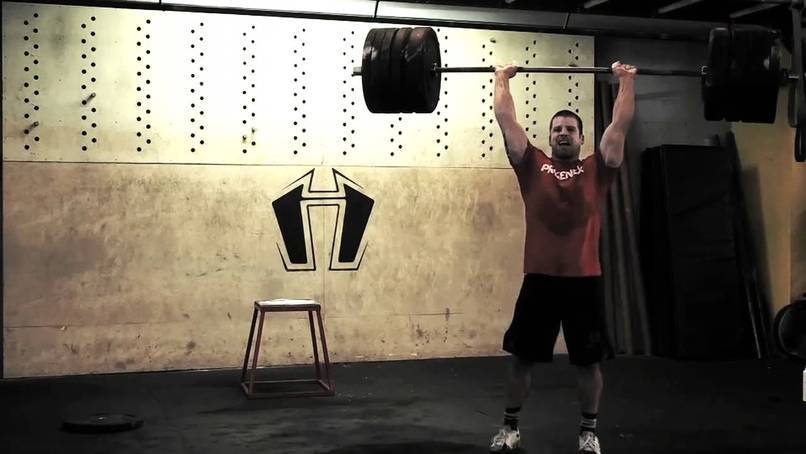CrossFit workouts in general are not easy.
Then you have the ones that make you sweat, or better yet nauseous, just thinking about them. The Kalsu WOD is one of those.
What is Kalsu?
Kalsu is a Hero WOD. The workout is done by starting with 5 burpees followed by thrusters with 135/95. The burpees are done every minute on the minute. The thrusters are done until 100 are completed.
The Attack Plan
Since Kalsu can be overwhelming once you realized what’s really involved, a strategy on tackling it is needed before you start.
Below are three tips that may help:
- Doing 3 burpees instead of 5.
- Doing power cleans (225#) instead of thrusters with a time limit of 20 minutes.
- Doing 3 burpees instead of five.
- Replacing thrusters with tire flips.
- Time limit of 30 minutes.
- Replacing thrusters with wallballs (20/14) and a time limit of 20 minutes.
- 1. If this is your first time doing Kalsu we recommend you scale the weight down. Especially if you’re new to CrossFit. Choose a weight that’s challenging, keeping in mind that you’re doing 100 reps. Your coach can help you determine what weight to scale down to.
- 2. Crank out as many thrusters as you can in the first 2 rounds then start doing a low number of reps. For example, do 10 thrusters the first two minutes (after the burpees), then go down to 5 thrusters and down to less if you need to (even if it’s two!).
- 3. Start off with a certain number of reps. For example, start with 5-6 thrusters until you can’t do that amount. Then do less , like 3-4, after the burpees.
The whole point is not to allow yourself too much rest time. If you do, you’ll find this workout grueling and torturous. These tips may not make Kalsu easier but they will make it bearable.
Related: 33 Bodyweight CrossFit Workouts You Can Do At Home
Who Was Kalsu?
 (1945-1970) was an All-American tackle at the University of Oklahoma in 1967. He entered the army to fulfill his ROTC obligation in 1969. He served as a Second Lieutenant with Battery C, 2nd Battalion, 11th Artillery, 101st Airborne Division in the Vietnam War. He was killed in action on July 21, 1970 by mortar fire near the Ashau Valley.
(1945-1970) was an All-American tackle at the University of Oklahoma in 1967. He entered the army to fulfill his ROTC obligation in 1969. He served as a Second Lieutenant with Battery C, 2nd Battalion, 11th Artillery, 101st Airborne Division in the Vietnam War. He was killed in action on July 21, 1970 by mortar fire near the Ashau Valley.
How The Kalsu WOD Came About
This Hero WOD honors fallen soldier James Robert “Bob” Kalsu. It came from CrossFit Football in 2010. According to John Welbourn (creator/operator of CrossFit Football and Power Athlete) the Hero WOD was born from a conversation with Andy Stumpf.
Who Is Andy Stumpf?
Welbourn had met Andy Stumpf through his work with the CrossFit Level 1 Certification. They quickly became friends and when Welbourn needed a hero workout, he called Stumpf for help. And that’s when Kalsu was created.
How To Do A Burpee
The burpee is a combination of a squat, pushup, and vertical leap.
To perform a proper one, do the following:
• Start in a standing position.
• Squat down and place your hands on the floor in front of you.
• Kick your feet behind you so that you’re in a plank position.
• Do a pushup.
• Bring your feet back in where they started.
• Jump up in the air reaching your arms overhead.
How To Do A Thruster
The thruster takes practice so if you haven’t done these don’t go too heavy.
• Using a barbell, either clean it to your shoulders or unrack it. The barbell should be resting on your shoulders. Elbows should be pointing downward.
• Squat down with the barbell on the front of your shoulders.
• Explode back up and push the barbell overhead.
• You should end with arms locked, shoulders forward, and straight legs.
Kalsu Variations
Believe it or not, the Kalsu is so hard that variations have been made by coaches.
Some of them are:
Light Kalsu
Rob Orlando’s Kalsu

Strongman Kalsu
Wallball Kalsu
There’s no doubt that Kalsu will take everything you’ve got mentally as well as physically. It was designed to be a workout for the elite so don’t be afraid to scale back on weights. Better to be safe than injured. Now that you’ve been given a plan of attack, try it and see how it goes.
Leave us a comment below and let us know what variation you decide to do and time.

